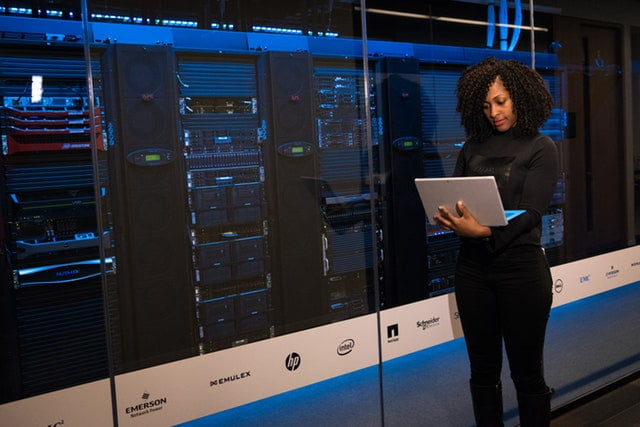The fastest-growing space for jobs is within tech and data. Unfortunately, women are underrepresented within the industry. While women hold 57% of professional jobs in the U.S., they only represent 27% of tech jobs, according to research conducted by NCWIT.
This disparity is due to multiple factors. STEM education is traditionally targeted for men and doesn’t always feel like a welcoming space for women. Math and science are more likely to be associated with men and roles in those fields are considered more masculine. These traditional thoughts are only perpetuated through a lack of women representation in leadership roles. When there is a better representation, women are more likely to consider tech and science as a career path.
Women have the potential to make a huge impact on data and analytics. And even bigger impacts on an organization’s performance and bottom line. Women are more likely to support communication, feedback, and collaboration. While also being more aware of risk and supportive of metrics in strategy. Women are the ideal candidates for roles in data.
But how can we be agents of change?
We all understand the importance of supporting a diverse workforce within our organizations. But, we need to do more than just looking at the diversity numbers for the organization overall. Diversity should be broken down by department and leadership level. Take a look at the number of women in IT, operations, and the c-suite. Does the percentage in those areas reflect the overall percentage of the organization? Most likely, they don’t. Especially within those IT, data, and system-related roles.

Once the data is there to support the need for diversity initiatives, what’s next? Well.. awareness and education are the best places to start. First, break up the boys club through awareness training for hiring managers. We tend to hire people similar to what we’re familiar with. Either someone that reflects who we are or who the person that is leaving. Yes, there are certain traits that will make it more likely for the person to be successful in the role. But, it’s important to differentiate what are vital needs for the role vs. what we’re used to being in that role. Also, have managers reflect if any of those characteristics are traditionally viewed as masculine or feminine.
We can also support the initiatives of women addressing the gender gap on a larger scale. Women in Data Science (WiDS) began through a partnership between Stanford and SAP. It was just an annual conference that worked to inspire and educate data scientists and support women in data. Margot Gerritsen, a prominent data scientist, started WiDS and it has grown it into much more. The conference is now a year-long initiative by adding podcasts, a datathon, and 150+ regional events.
HR is the ally needed for change
Supporting women in data and tech starts with reflection. We need to find where the problems are before we can address them. HR can be a key business partner at this stage through metrics and analytics. Establishing the right diversity and inclusion metrics will make it easier to understand what the data is telling you. An HR dashboard provides even more insight as it automatically visualizes the metrics. HR should follow up with targeted initiatives to bring more women into the data world.
Sign up for a free demo of our automated HR dashboard today. It might just be the change your organization needs to help bridge the gender gap.












